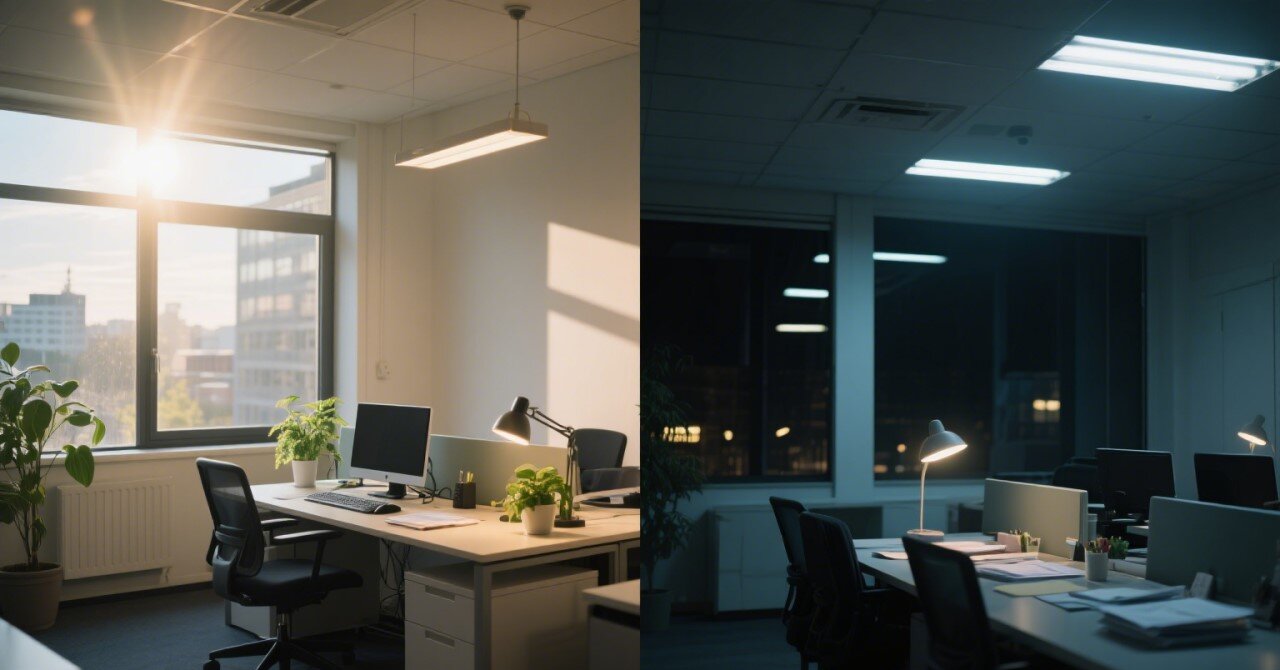In the quest for smarter, more sustainable buildings, daylight harvesting and photocell a starring role, they are revolutionizing how we illuminate spaces, saving energy and enhancing comfort. But what exactly are they?
What is Daylight Harvesting?
Daylight harvesting is an automatic lighting control strategy used in the building controls industry. It automatically adjusts artificial light output based on the amount of available natural daylight entering a space and works by reducing the use of electric lighting when daylight is available, thereby lowering energy consumption. In essence, it leverages natural daylight to offset the amount of electric lighting needed for proper space illumination.

Primary Function
Its primary goal is to maintain a consistent, desired light level while minimizing energy waste. When ample daylight is present, the system dims or turns off the artificial lights. As daylight fades (e.g., due to clouds, sunset, or shading), the system gradually increases artificial light output to compensate. This ensures optimal illumination without over-lighting. It can maintain the total light level at a desired setpoint by dimming or switching off electric lights.
Technology
Photosensors: (Photocells) strategically placed to accurately measure daylight contribution on the work surface.
Lighting Control System: The "brain" that interprets sensor data and calculates the required artificial light level.
Dimming Ballasts/Drivers: Compatible LED drivers or fluorescent ballasts that allow the control system to smoothly adjust light output.
Applications
Commercial Buildings: Widely used in offices, schools, hospitals, and other commercial spaces. For example, in office spaces with large windows, daylight harvesting systems can significantly reduce the need for electric lighting during daytime hours, lowering energy costs and creating a brighter, more pleasant work environment.
What is Photocell?
A photocell is an electronic device that detects ambient light levels. It is a passive component that changes its resistance based on the amount of light it receives. The concept behind it is based on the photoelectric effect, where light energy is absorbed by a material, causing electrons to be released and creating a current flow. Think of it as the "eyes" of a smart lighting system. It measures the amount of natural daylight present in a space.

Primary Function
Its core job of it is that sensing light intensity. It continuously monitors the illumination level and sends this data to the lighting control system. Photocells are used to sense the presence and intensity of light in a particular area. They can convert light energy into electrical signals, enabling automatic control of various devices based on the detected light levels.
Technology
While traditional photocells often used Cadmium Sulfide (CdS) photoresistors (LDRs - Light Dependent Resistors), modern systems increasingly rely on more precise and durable silicon photodiodes or phototransistors. These generate an electrical signal proportional to the detected light level.
Applications
Widely used in automatic streetlights, parking lot lights, and other outdoor lighting systems. These lights turn on automatically when daylight fades and turn off when daylight returns, ensuring safety and convenience while saving energy. Automatic switching of outdoor lights (streetlights, security lights) at dusk/dawn.
Copyright © ARK Lighting(Shenzhen)Co., Ltd. All Rights Reserved | Sitemap |